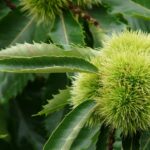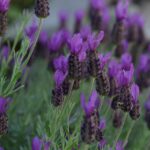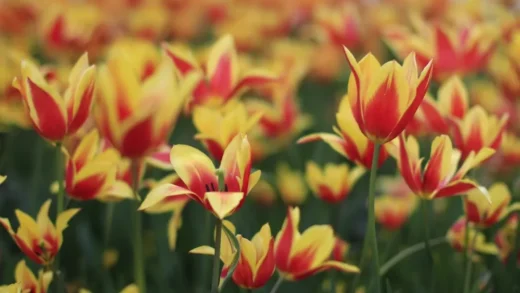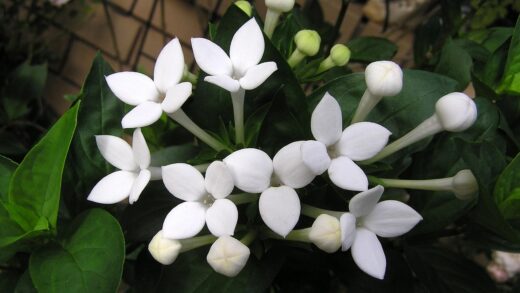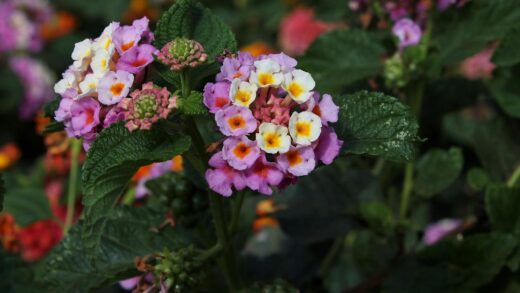Bacopa, with its delicate cascading stems and profusion of small, star-shaped flowers, is a beloved choice for container gardens, hanging baskets, and as a ground cover. Achieving a lush, continuous bloom from spring until the first frost requires an understanding of its fundamental needs. Proper care involves a careful balance of sunlight, water, and nutrients, which collectively contribute to the plant’s vigour and floral display. This guide provides a comprehensive overview of the essential practices needed to cultivate healthy and beautiful bacopa plants, ensuring they remain a highlight of any garden setting. Mastering these techniques will transform a simple plant into a spectacular, season-long spectacle of colour.
While bacopa is often lauded for its beauty, it is also appreciated for its relatively straightforward care requirements, making it suitable for both novice and experienced gardeners. The plant thrives in environments that mimic its native southern African habitat, which means it appreciates consistent moisture and protection from the most intense afternoon sun. Its trailing habit makes it a natural choice for spilling over the edges of pots and baskets, softening hard lines and adding a touch of elegance. Regular attention to its basic needs will prevent common issues such as leggy growth or a reduction in flowering, allowing the plant to reach its full potential.
The foundation of successful bacopa care lies in providing the right growing medium and location from the outset. A well-draining, fertile potting mix is crucial to prevent waterlogging, which can lead to root rot and other fungal diseases. The container itself should have adequate drainage holes to allow excess water to escape freely. When selecting a site, consider the interplay of light and temperature, as these factors directly impact the plant’s metabolic processes, including photosynthesis and flower production. An optimal location sets the stage for a season of robust growth and prolific blooming.
Beyond the initial setup, ongoing maintenance throughout the growing season is key to keeping bacopa looking its best. This includes a consistent watering schedule, a regular feeding regimen, and periodic grooming to encourage new growth and more flowers. While often described as “self-cleaning,” meaning it drops its spent blooms without needing deadheading, a light trim now and then can rejuvenate the plant. Understanding these nuances of care will ensure that your bacopa remains a vibrant and healthy component of your garden design throughout the summer and into the autumn.
Understanding the growing environment
The ideal growing environment for bacopa is one that provides a balance between ample light and protection from harsh conditions. These plants perform best in locations that receive at least four to six hours of direct sunlight each day, preferably during the cooler morning hours. While they can tolerate full sun in more temperate climates, in hotter regions, some afternoon shade is highly beneficial. This partial shade prevents the delicate foliage and flowers from scorching and helps the soil retain necessary moisture, reducing stress on the plant during the peak heat of the day.
More articles on this topic
Soil composition is another critical factor in creating the perfect environment for bacopa. The plant requires a substrate that is both rich in organic matter and exceptionally well-draining. A high-quality commercial potting mix designed for annuals or container plants is an excellent starting point. To further enhance drainage and aeration, incorporating materials such as perlite or coarse sand can be advantageous. This type of soil structure supports healthy root development by providing essential nutrients while simultaneously preventing the roots from sitting in stagnant water, which is a common cause of decline.
Air circulation is an often-overlooked but important aspect of bacopa care. Good airflow around the plant helps to dry foliage more quickly after watering or rain, which significantly reduces the risk of fungal diseases like botrytis or powdery mildew. When planting in hanging baskets or containers, avoid overcrowding them with too many other plants. In garden beds, ensure there is adequate spacing between individual bacopa plants and their neighbours. This spacing not only promotes better health but also allows the plant’s natural trailing habit to be displayed to its full effect.
Finally, bacopa is sensitive to extreme temperatures, both hot and cold. It thrives in moderate conditions and may struggle during prolonged heatwaves, often ceasing to flower until cooler weather returns. Conversely, it is not frost-tolerant and will be damaged or killed by freezing temperatures. Understanding the local climate and providing appropriate protection, such as moving containers to a more sheltered spot during extreme heat or covering plants if an early frost is predicted, is essential for its long-term health and performance. This proactive approach to managing its environment is fundamental to successful cultivation.
Watering and moisture management
Consistent moisture is the cornerstone of healthy bacopa growth, as these plants are not drought-tolerant and react poorly to dry soil. The growing medium should be kept evenly moist at all times, but never waterlogged or saturated. The best practice is to check the soil moisture daily, especially during hot, dry weather. A simple touch test is effective: insert a finger about an inch into the soil, and if it feels dry, it is time to water. Plants in smaller containers or hanging baskets will dry out more quickly than those in larger pots or garden beds and may require watering more than once a day during peak summer heat.
More articles on this topic
The method of watering is just as important as the frequency. It is always best to water bacopa at the base of the plant, directly onto the soil, avoiding the foliage and flowers as much as possible. Wet leaves, especially in humid conditions or overnight, can create an ideal environment for fungal diseases to develop. Using a watering can with a long spout or a drip irrigation system allows for precise application of water to the root zone where it is needed most. A thorough, deep watering that allows a small amount of water to escape through the drainage holes is more effective than frequent, shallow applications, as it encourages the roots to grow deeper into the soil.
The quality of the water can also influence the health of bacopa. While most tap water is suitable, plants can be sensitive to highly chlorinated or softened water over time. If possible, using rainwater is an excellent alternative as it is naturally soft and free of the chemicals often found in municipal water supplies. Allowing tap water to sit for 24 hours before use can help some of the chlorine to dissipate, making it gentler on the plants. This attention to detail can contribute to more robust and resilient growth throughout the season.
Monitoring the plant’s appearance provides clear clues about its watering needs. If the leaves begin to wilt or the plant looks droopy, it is a clear sign of thirst and it should be watered immediately. Conversely, yellowing leaves, particularly at the base of the plant, can be an indication of overwatering and potential root problems. Adjusting the watering schedule based on weather conditions—more frequently in hot, windy weather and less in cool, cloudy periods—is crucial for maintaining the optimal moisture balance that bacopa requires to flourish.
Fertilization for continuous blooming
To sustain its prolific blooming from spring through autumn, bacopa requires a consistent supply of nutrients. These plants are considered heavy feeders, meaning they quickly deplete the nutrients present in their potting soil. A regular fertilization schedule is therefore essential to support vigorous growth and the continuous production of flowers. Without adequate nutrition, the plant may become sparse, with yellowing leaves and a significant reduction in the number of blooms, failing to provide the lush, cascading effect for which it is prized.
The most effective way to fertilize bacopa is to use a balanced, water-soluble fertilizer every two to three weeks throughout the growing season. A formulation with an N-P-K ratio such as 20-20-20 or one specifically designed for flowering annuals is ideal. Diluting the fertilizer to half the recommended strength can be a good practice to avoid the risk of fertilizer burn, especially during periods of very hot weather when plants are more stressed. This “weakly, weekly” or “weakly, bi-weekly” approach provides a steady stream of nutrients that the plant can easily absorb and utilize for flower production.
Alternatively, incorporating a slow-release granular fertilizer into the potting mix at the time of planting can provide a baseline level of nutrition for several months. This is a convenient option that ensures the plant has access to essential nutrients from the start. However, even with a slow-release fertilizer, it is often beneficial to supplement with a liquid feed starting in mid-summer. This is because the heavy flowering and rapid growth of bacopa can exhaust the initial supply of nutrients, and a liquid boost can help maintain its performance through to the end of the season.
It is important to always water the plant thoroughly before applying any type of fertilizer. Applying fertilizer to dry soil can scorch the roots and cause significant damage to the plant. After fertilizing, watering again lightly can help to distribute the nutrients evenly throughout the root zone. Pay attention to the plant’s response after feeding; healthy, dark green foliage and an abundance of new flower buds are signs that the fertilization regimen is effective. If the foliage appears burnt at the edges or growth seems stunted, it may be necessary to reduce the frequency or concentration of the fertilizer.
Pruning and maintenance for plant health
Although bacopa is often referred to as a “self-cleaning” annual, meaning it typically drops its old flowers without needing assistance, periodic pruning is highly beneficial for maintaining its shape and encouraging denser growth. Over the course of the growing season, the trailing stems can sometimes become long and straggly, with flowers concentrated only at the tips. This is often a sign that the plant would benefit from a light trim. Regular pinching back or trimming of the stems promotes branching, which results in a fuller, more compact plant with more flowering sites.
The best time to prune bacopa is anytime it starts to look leggy or sparse. Using a clean, sharp pair of scissors or pruning shears, trim back about one-third of the length of the longest stems. This encourages the plant to send out new lateral shoots from the nodes below the cut, quickly filling in any gaps. This type of light, regular pruning is much more effective than a single drastic cutback. A small trim every few weeks will keep the plant looking tidy and will stimulate a continuous flush of blooms all over the plant, rather than just at the ends of the stems.
In the middle of summer, particularly during a period of intense heat, bacopa may experience a temporary lull in flowering. This is a natural response to heat stress and is an opportune moment for a more significant rejuvenation pruning. At this time, cutting the entire plant back by about half can seem drastic, but it is one of the most effective ways to refresh it for a strong autumn display. Following this hard prune, it is important to provide the plant with a dose of liquid fertilizer and ensure it is well-watered to support the burst of new growth that will follow. Within a couple of weeks, the plant will rebound with fresh foliage and a new wave of flowers.
Beyond pruning, general maintenance includes monitoring for any signs of pests or disease. Regularly inspect the undersides of leaves and the points where stems join for common pests like aphids or whiteflies. Removing any yellowing or dead leaves from the plant and keeping the soil surface free of debris can also help to improve air circulation and reduce the likelihood of disease. This combination of regular grooming and vigilant inspection is crucial for preventing minor issues from becoming major problems, ensuring the long-term health and aesthetic appeal of your bacopa.
Overwintering considerations
Bacopa is a tender perennial, meaning that while it can live for more than one year in its native warm climate, it is typically grown as an annual in regions with cold winters. It cannot tolerate frost, and freezing temperatures will kill the plant. However, for dedicated gardeners, it is possible to overwinter bacopa indoors, allowing it to survive the winter and be replanted in the garden the following spring. This process requires providing the plant with the right conditions to endure the less-than-ideal indoor environment during the colder months.
The first step in preparing bacopa for overwintering is to bring it indoors well before the first expected frost of the autumn. Before moving the plant inside, it is crucial to inspect it thoroughly for any pests or diseases. Pests like aphids, spider mites, and whiteflies can thrive in the warm, dry conditions of a heated home, so it is essential to treat any infestations before bringing the plant indoors. It is also a good practice to give the plant a significant trim, cutting back the stems by about half to create a more manageable size and shape for its indoor stay.
Once inside, the overwintering bacopa needs a location that provides as much light as possible. A south-facing window is ideal, but if that is not available, placing it under a grow light for 12-14 hours a day can provide the necessary light intensity to keep it healthy. Indoor conditions for bacopa should be cool, ideally between 10-15°C, as this encourages a state of semi-dormancy rather than active growth. Reduce watering significantly during the winter months, allowing the top inch or two of soil to dry out completely between waterings, and cease all fertilization until spring.
As spring approaches and the days begin to lengthen, you can gradually prepare the plant for its return outdoors. Increase watering frequency slightly and provide a half-strength dose of a balanced liquid fertilizer to encourage new growth. Once the danger of all frost has passed, begin the process of hardening off the plant. This involves placing it outside in a shady, protected spot for a few hours each day, gradually increasing its exposure to direct sunlight and outdoor conditions over the course of one to two weeks. This acclimatization process is vital to prevent shock and ensure a successful transition back into the garden.
📷: Deavmi, CC BY-SA 3.0, via Wikimedia Commons









